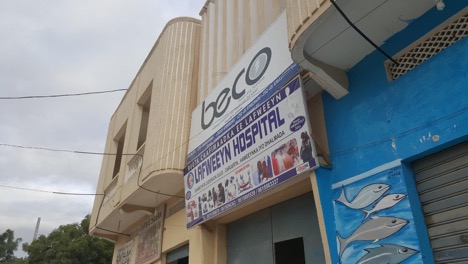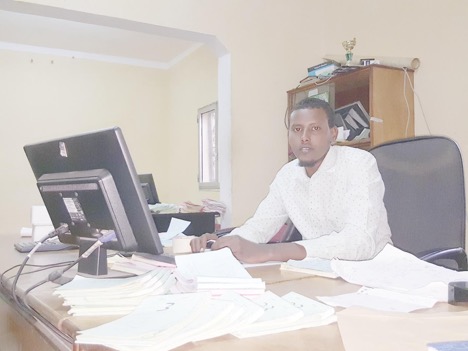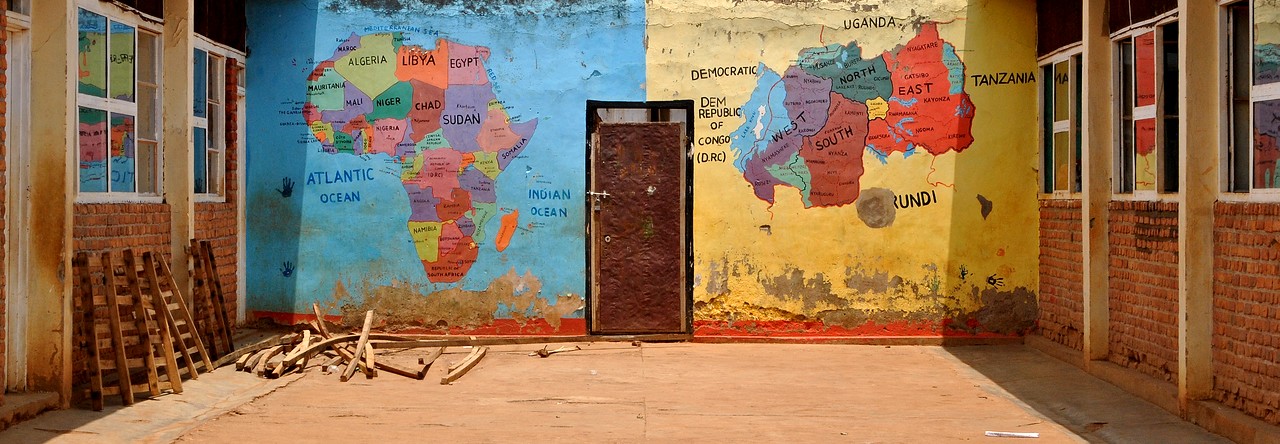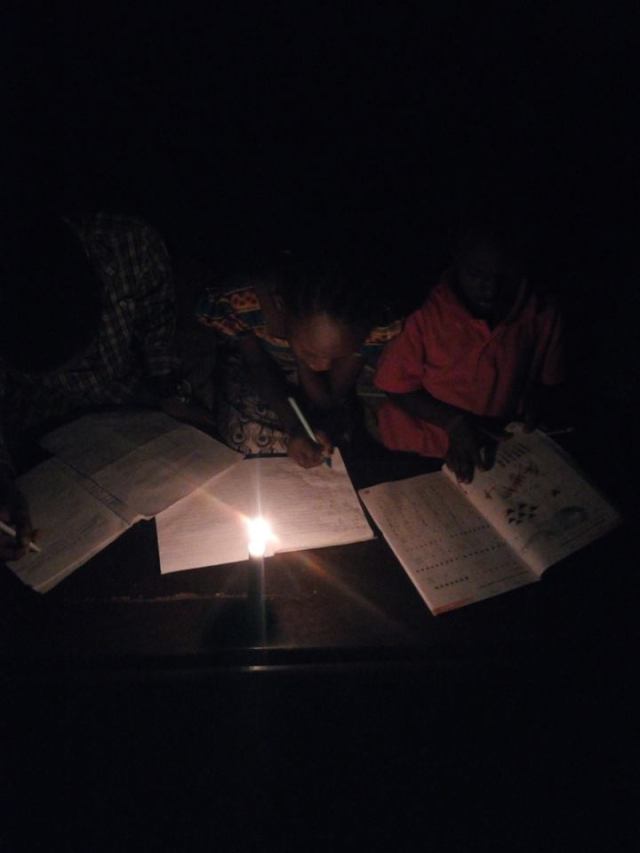 — By Adan from Somalia
— By Adan from Somalia
This project was completed as part of a special course on electricity in Africa, in collaboration with the Enel Foundation.
INTRODUCTION
Somalia, which lies the horn of Africa, is one of the poorest countries in the world. It is recovering from 26 years of civil wars which paralyzed the infrastructure of the country, including the energy sources. During the civil wars, the state-owned energy company ENEE (Ente Nazionale Energia Elettrica) and the national utility operating a national grid which was serving the cities of Mogadishu, Hargeisa, Berbera, Gardo, Erigavo, Merka, Bossasso, Burao, Kismayo, and Badoa shut down and the Ministry of Electricity was inactive.
However, Somalia is currently enjoying a total privatization of electricity which has partially filled the role of the government, thought they cover the electricity needs of the major cities. Still, they are tackling unaffordable prices with less power to generate more energy. During this photo essay, I will interview representatives from the both private companies and the Ministry of Electricity and Water. Also, I will show how electricity in the country affected negatively the health, schools, and workplaces.
At the end of this study I will come up with some proposed solutions which will mitigate or stop the bad effects of the electricity on social services and workplaces by quoting different stakeholders in this issue.

Here is a traffic street inside Mogadishu; the long wall is the center of ex-state owned energy company ENEE, which is currently repaired and resided by a private company called BECO (Banadir Electric Company). Inside the wall there is a motor which works 24 hours a day and generates power. Opposite the wall there is an hospital called Iqraa Medical and Surgery Hospital; in its door stands a young nursing boy as you can see from the picture. The patients, workers and administration have problems with the sound of the motor.
The hospital patients are also suffering from the sound of the cars and motorcycles which regularly use the street, as you can see from picture. The businesses near the motor face sound pollution from it as well.

This is another picture that shows how electricity negatively affects social services and works. This building is an accommodation for the same company of BECO, a hospital called Lafweeyn, and a factory which processes fish. Though BECO uses this building only for office, still every day company workers with ladders, wires and other electricity tools come from the building which may affect the attached hospital and factory. Beside these social centers and works appeared in the picture there are other shops and pharmacies which reside here.

This picture shows the WIIF Electricity and Water Supply Company motor which attaches to Anas Bin Malik Primary and Secondary school. This school has nearly 2,000 students in two shifts and the motor works all day by generating power and makes waste pollution to the nearby environment. The people who reside near this motor have difficulties communicating because of the heavy sound of the motor. Some people believe that schools and hospitals reside near the motors since the rent is too cheap because of the pollution, but those social centers ignore the interest and health of their customers, including patients and students.
These two attached pictures taken from two different angles show the same company, WIIF, which releases waste pollution to the nearby environment. The tubes are not controlled well so this company produces more supply of water and everyone who passes this street experiences a bad smell.

I interviewed Engineer Abdulkadir Mohamed Abdulle, the director of the renewable energy department of the Ministry of Electricity and Water. Abdulkadir, who was in his car while he was letting me interview him, answered many questions related to this topic; he told me that there are many environmental, social, and economic problems regarding electricity in Somalia including:
- Very high dependence on unmanaged and unsustainable biomass energy (86% of Somali electricity is generated from biomass)
- Threat to desertification
- Health hazard to women and children
- Too much time and energy spent to collect biomass
- Inefficient traditional stoves, etc.
- Rural poor unable to change their way of life due to lack of modern energy
- Existing electricity tariffs do not cover costs. Cost of 1kW is 1USD
- Lack of penetration by the private sector
- Heavy dependence on imported oil
- Roughly 90% of the Somali population has no access to electric power
He also told me that ENEE used to produce 170 MW – 190 MW, but current private companies only produce 30 to 40 MW. He added that Somalia is experiencing a low quality of distribution networks and that the ministry is planning to prepare regulations for the private electric companies.

Engineer Abdurrahman Ibrahim Isse is a secretary in the engineering department of Mogadishu Power Supply Company. The first question I asked was if they have a bad affect on the social services and works and he said to me that before they rent a center they make sure that there are no social service centers nearby such as schools, MCHs, hospitals, etc. He also told me that they have social responsibility policies including free electricity to nearby houses and businesses, giving internships to the electrical engineering students, and low charges to the needy people.
He said to me that one of the electrical problems in Somalia is the high price of kilowatts and that they are planning to make Somali electricity as cheap as India and Sudan. He said that the cost of a kilowatt in India is just over 0.00 rupees which costs only $3.5 per month. Also, Sudan is enjoying $0.12 per kilowatt. He extended the problems which Somali industries inherited from high cost of electricity. As an example, he used an industry which produces pasta in Kuwait that spends $1800 only per month on electricity compared to a Somali industry which produces bread that has electricity costs of $50,000 per month.
He said to me that a Somali investor tried to establish an industry which makes ice cream and sweets. When the estimated cost of electricity became $25,000 per month, he decided not to do it.

Abdifitah Elmi Osoble, is a branch manager at Blue Sky company for electricity. This company is one of two companies which have full social responsibility policies; they succeeded to make their motors out of the city. Also, they don’t have any bad effect on social service centers.

Abdifitah Hassan Alasow is deputy finance director at WIIF Electric and Water Supply Company. This company has a bad effect on the environment and social service centers. As you see in this study, it makes waste pollution to the environment. Also, one of their motors is attached to a school. He told me that all their motors are inside the city.
When the administration of BECO, which is the most polluted company beside WIIF, rejected to give an interview to this study without reason, fortunately one of my co-workers connected me to one of their branch managers called Hassan Abdullahi Mohamed. Though he rejected me to take a picture of him he told me that they are planning before they place their motors in an area. He also said, “we have a social responsibility policy by giving aid contribution to the famine-affected people in the country, and free or discounted electric service to schools, mosques, public places, such as roads, streets and etc.” He also mentioned that they have automatic switches/circuit pickers in case of electricity risk.
PROPOSED SOLUTIONS
By quoting the above-mentioned interviewees of this study the most suggested solutions to Somali electricity are as follows:
- To rebuild ENEE, Somali Energy Managing Agency, and namely to build a new power plant.
- To establish public enterprises which provide cheap electric service to the citizens and compete with private companies.
- To make firefighters in case of electrical risk problems or fires exploding; now the Ministry of Electricity has no firefighters or any other policy in case this risk comes.
- To move from fuel/gas energy to solar energy. If this happens the citizens will enjoy low cheap, affordable and 24 hours service of electricity. If the electricity becomes cheap the production of industries will increase, which enhances the economy and well-being of the country, as well as increasing employment (currently BECO generates only 2.5 megawatt from solar energy).
- To practice effective social responsibility policies, including automatic switches, free or low charge of electric to social service centers and public goods/places.
- Flexible government: in Somalia the politics are unstable; sometimes the cabinet only exists less than in one month due to conflict between prime minister and the president, so the data about electricity is not stored well. Thus, it is very important that any minister who is leaving from the office should transfer the data to the new minister.
- Training the workers: currently, the workers of the private companies are mostly unskilled and less trained. The director of the renewable energy department told me that the workers of the private companies don’t get any training services from the ministry due to the security threat from Islamic extremist of Al-shabaab; this group may target those workers in case they interact with the government.
- Regulations from the Ministry of Electricity to private electricity companies: currently there are no regulations from the Ministry of Electricity to private electricity companies, so this should done as soon as possible.
- Safe and reliable electricity distribution system in the country. The current system is useless and complicated.
- Capacity building
SUMMARY AND CONCLUSIONS
I conducted this study in the capital city of Mogadishu, where I interviewed 5 representatives from the four working private companies in Mogadishu and ministry of electricity and water supply, also I contacted to different people in the other 17 regions in the country, they told me that private companies covered the electricity need of the capital cities of the regions, but other towns get difficulties with the availability of electricity, also I knew that mostly the people in the major cities of the country have access of internet, though it costs arm and leg,
It took me 18 days to finish this study I want to thank all people who helped me during this study, including electric companies and ministry it concerned, and some of my friends who connected me to some of the managers of the private companies.

 — By Sam from Uganda
— By Sam from Uganda
 — By Ifeoluwa from Nigeria
— By Ifeoluwa from Nigeria



 — By Franklin from Nigeria
— By Franklin from Nigeria — By Gugulethu from Zimbabwe
— By Gugulethu from Zimbabwe — By Yuh Acho from Cameroon
— By Yuh Acho from Cameroon — By Anibe from Nigeria
— By Anibe from Nigeria — By Adan from Somalia
— By Adan from Somalia







